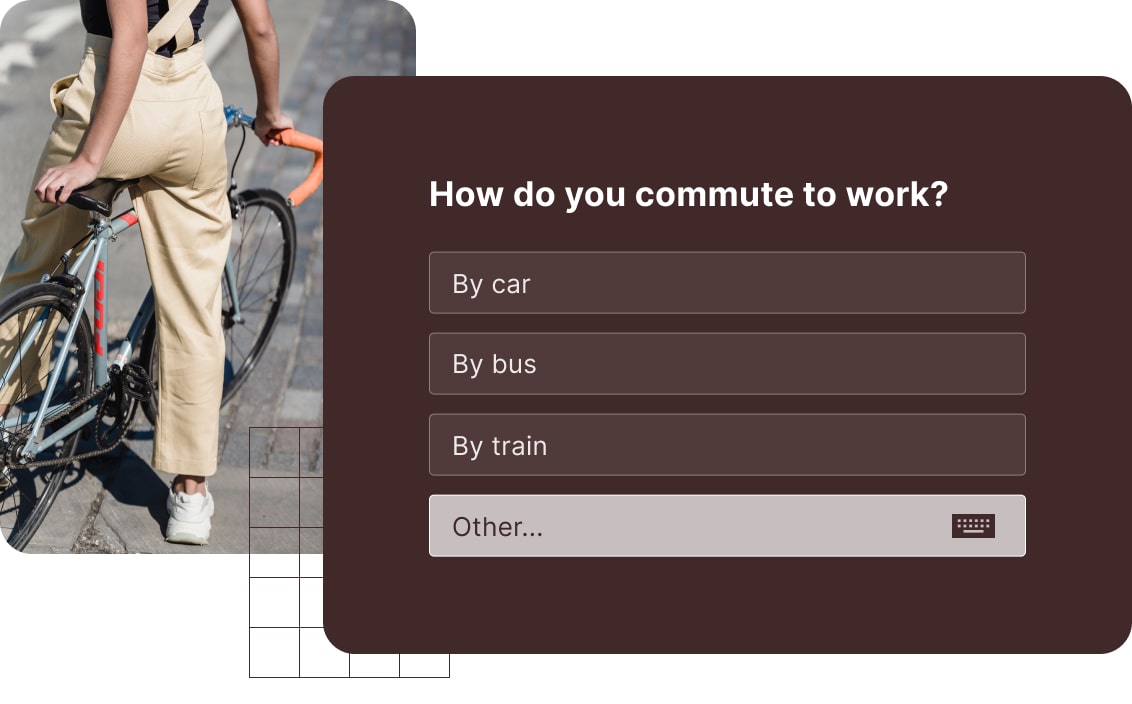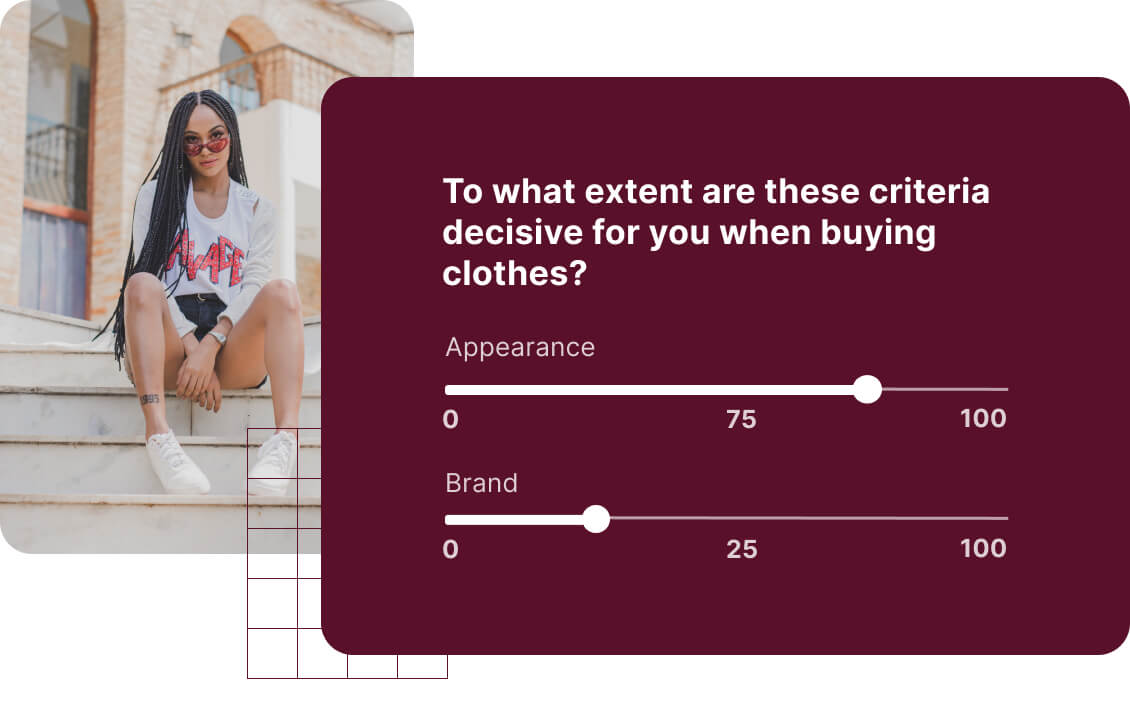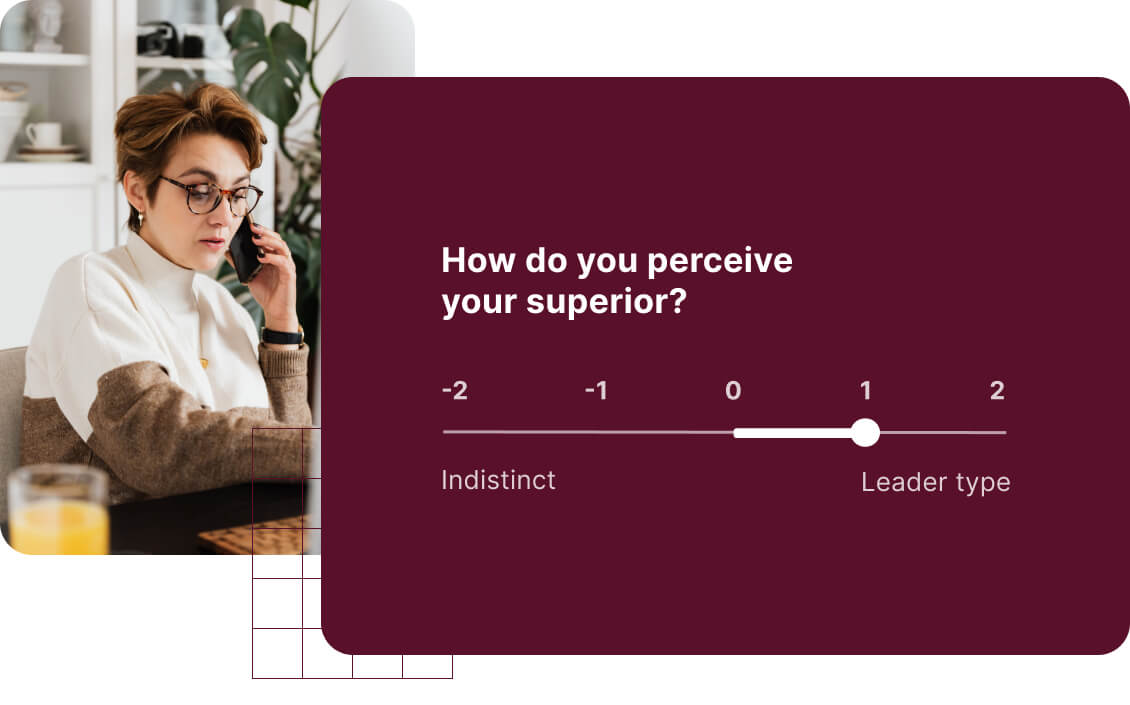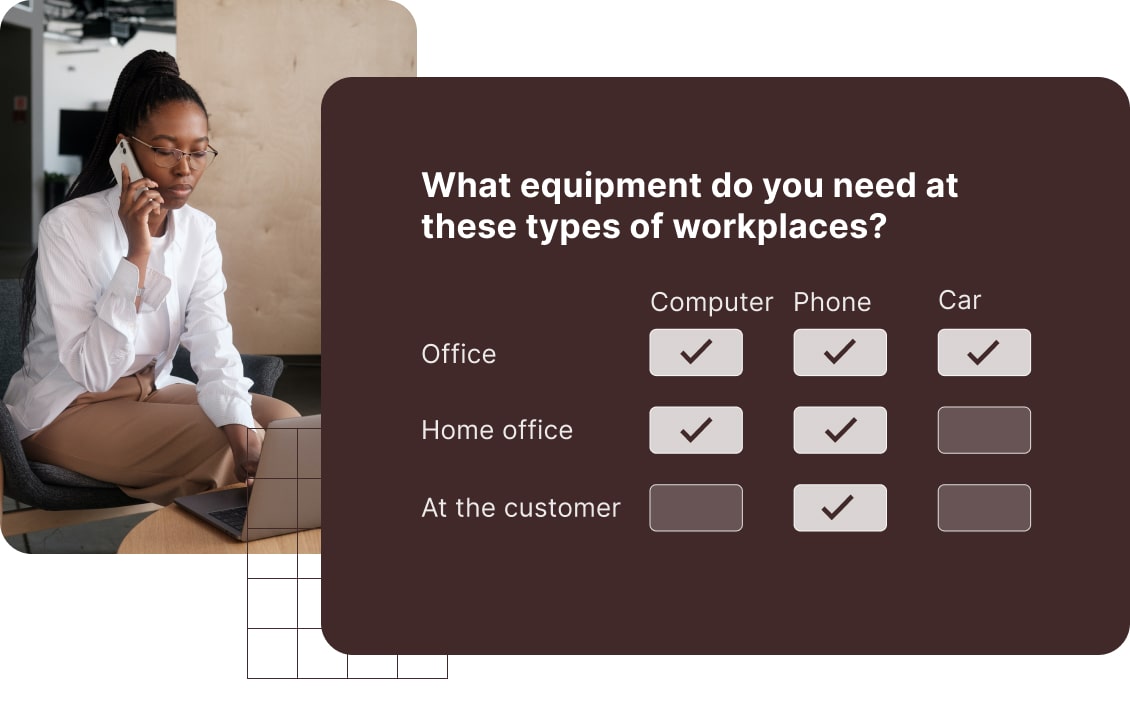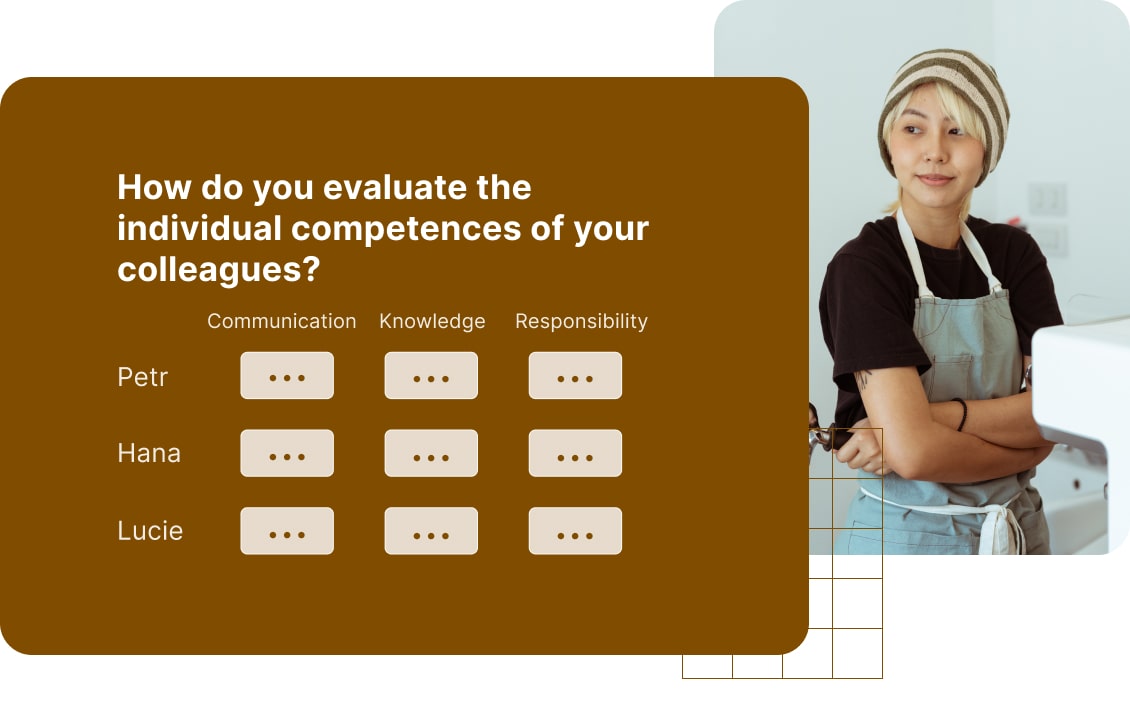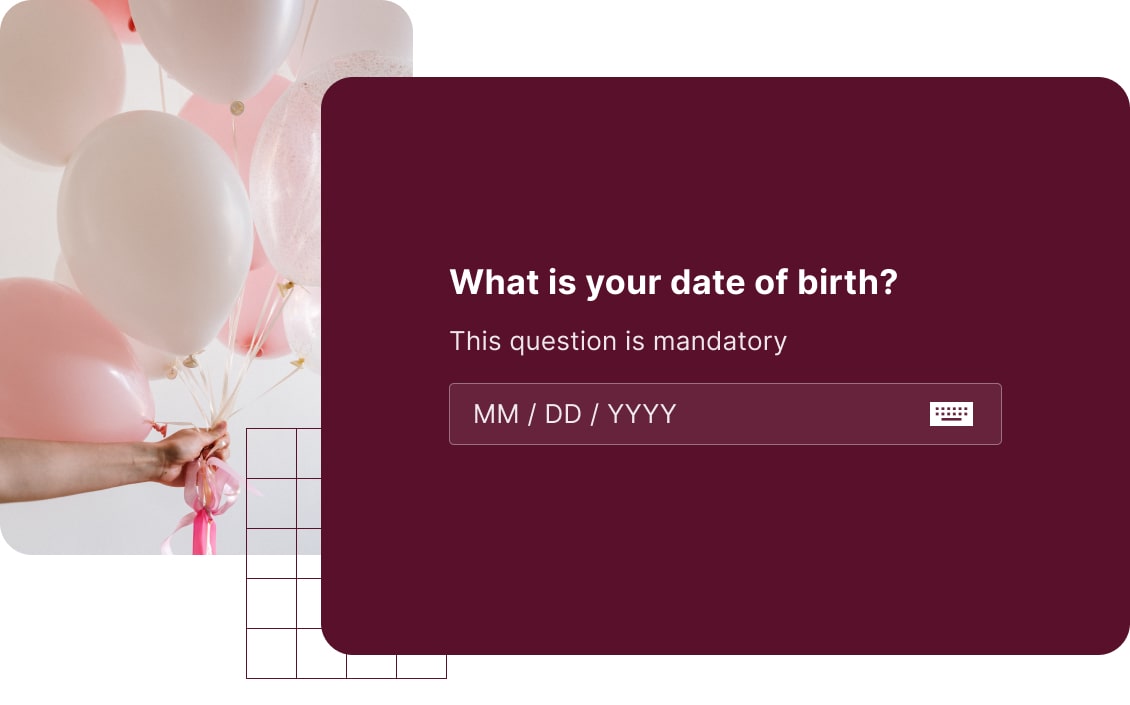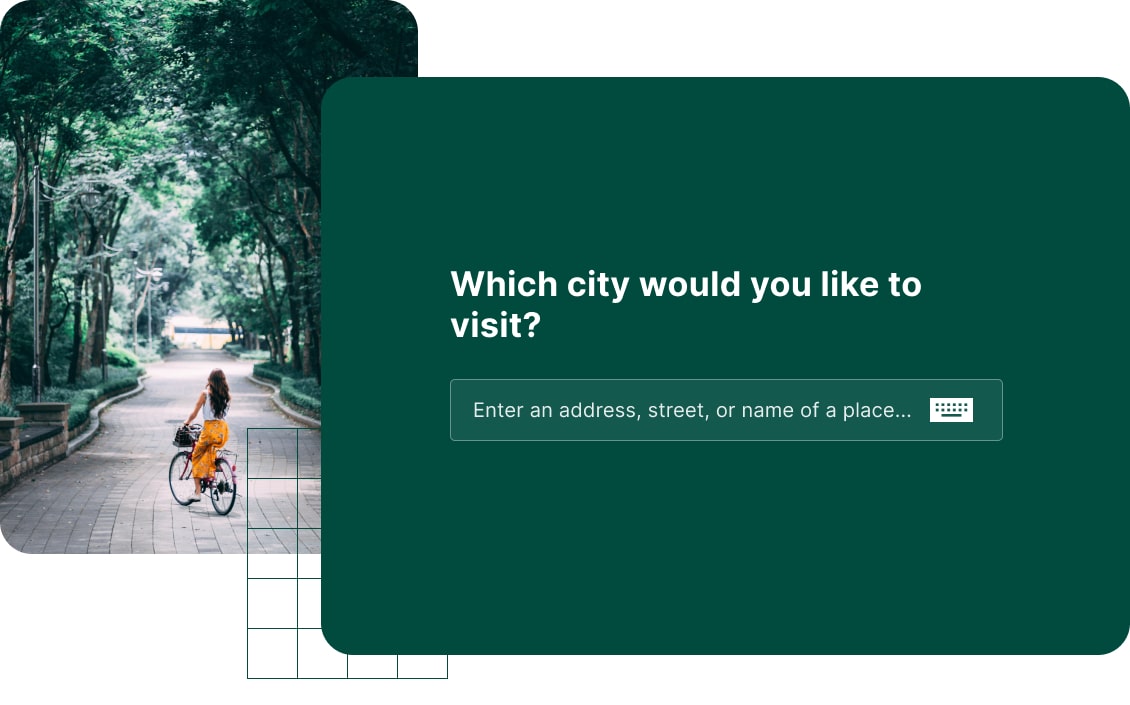Star rating
Do you want to make it easier for respondents to answer? Do you just need information on whether something was good or bad and how much? Then choose the star rating. The respondents select the number of stars according to their evaluation. The advantage of this popular question is speed and simplicity. The question contains a visual element and is therefore more attractive to the respondent. It is great for filling in on mobile devices.
Single choice
A Single choice question is a simple and clear question for your respondents. At the same time, it is easy to analyze. When you add up all the answers, their number will be the same as the number of respondents, and you can easily prepare pie charts. The question is great for queries where you want a clear answer, including, for example, numerical intervals, word scales (Likert Scale), etc. You can display the answers not only below each other, but also next to each other or as a scroll box.
Single choice with the option "Other"
Expand the Single choice question with the “other” answer. Especially if you are not sure if you have given your respondent all the options in the answers. This type of question is great for the so-called pre-research, in which you test whether you have compiled the survey correctly and the respondents filled it in correctly. The answers given in the “other” column can then be given in real research as predefined answers in an ordinary Single choice question.
Image choice
Test your graphic concept. Let the respondents decide which logo, packaging, color concept or other graphic they like more. Use two or more pictures, upload them to the question and find out which variant people prefer the most. The Image choice question is more illustrative than the other questions. In addition, it will also increase the visual attractiveness of the survey.
Multiple choice
Multiple choice will be useful, for example, when you ask the customers what is important or what they would like. The question is easy to evaluate and is very intuitive for the respondent. Remember that the number of all answers will not equal the number of respondents, as each of them can choose one or more answers.
Multiple choice with the option "Other"
As with the Single choice, you can add the “other” answer to the Multiple choice. This will prevent data distortion in cases where the respondents did not find their answer between the options and therefore answered randomly. However, the disadvantage is that you will have to read the individual text answers in the results and evaluate them separately.
Rating scale slider
The respondents divide the value (e.g. points, money, percentages) between the individual options. Their answer will give you not only information about what is important, but also information about how important the given options are in mutual comparison and by how much. The whole value must always be divided. In the final evaluation, you get average values, similar to scales that show what is important for respondents.
Ranking
A ranking question will allow you to rank specific answer options according to priorities. You get the order of the individual options. The respondent answers very simply by moving the options with the finger or mouse to the final order. The result is the average position of each of the options. An example of this question is, for example, “How important are the given parameters for you when deciding on a purchase?”
Semantic differential
Using a semantic differential, you can measure the attitudes or perceptions of a product, for example. When answering, the respondents lean towards one of the two conflicting values expressing their attitude. Evaluating the semantic differential is simple. We either address the answers of one respondent (e.g. his/her profile) or the average value for all respondents. The question is easy for respondents to understand and by using it you will get a sophisticated result. If you prepare the question correctly, you will get a very good picture of the attitudes of your respondents.
Matrix - single choice
A matrix question (also known as a matrix or battery question) is useful if you want to ask several questions in a row that have the same answers (typically the Likert Scale). With this question you save time for the respondent, who, moreover, perceives it as one question. The survey is also clearer. The evaluation is the same as for Single choice and also very clear, because all the questions are arranged nicely together in one result table and in one graph and you can easily compare the results.
Matrix - multiple choice
For the Multiple choice matrix, the respondent can check multiple boxes in each row. Remember that this type of question must be justified. Survey authors sometimes choose this type of question without first considering whether this question is really suitable for obtaining the necessary data. Consider whether you really want the respondent to check all options in each row of the matrix. Improper use leads to the need to modify the data and automatic analysis cannot be used.
Matrix - text answers
The matrix with text answers is suitable, for example, for situations where each line, which can represent, for example, individual persons, assigns a rating to individual parameters. For example, you evaluate the abilities (communication, expertise and reliability) of individual colleagues and the respondent (in this case a colleague) evaluates, for example, numerically or verbally. You can also use this type of question for a form with form fields arranged in a single column. You can ideally use it, for example, for surveys for events where it is necessary to collect data about the participant.
Open-ended text question
Do you want to know the honest opinion or attitude of the respondents? Give them space to express themselves in an open text box. As a rule, you cannot directly evaluate these questions statistically, but they will help you better understand how the respondent thinks. Therefore, it is sometimes useful to combine open-ended and closed-ended questions. In the closed-ended question you get the answer to the “what?” question and in the open-ended question you get the answer to the “why did the respondent answer in this way?” question.
Open-ended text question - number
Do you need an answer in numeric format only? A number question looks just like an ordinary open-ended question, that is, a text box. However, you can set the answer type for this question to a number, and the field in the survey will not allow you to type anything other than a number. The question is great if you want to find out, for example, the exact age or number of children, or any other specific number.
Open-ended text question - date
Don’t worry about respondents entering the date in different formats. Use the date question and let respondents choose a specific date directly from the calendar that appears to them. The date is saved in a uniform format. Statistical evaluation will then be much faster and easier for you.
Open-ended text question - e-mail
When collecting contact information of respondents, an e-mail question will help you make sure that respondents have entered the e-mail address in the correct format. Don’t just end up getting an e-mail address. Use the respondents’ answers associated with their e-mail addresses, for example in your e-mail marketing. However, keep in mind that the e-mail address is subject to protection of personal data and you should notify the respondent how you will process it.
Open-ended text question - place
For this question, Survio will ask the respondent to fill in the address or name of a place. When you use a specific type of question, you help the respondents to quickly understand what you are asking them. Thus, they will go through the survey faster and you will get the right information.
Custom text
Do you need to insert not only questions but also additional text into the survey? Survio application will allow you to do this. With the text, you can explain additional contexts and help the respondents to better orient themselves in the survey. With this text you can introduce the individual parts of the survey so that the respondents better understand what they relate to and what their purpose is. You can also add an image here to make the survey visually more attractive and clear.

Star rating
Net Promoter Score®
Single choice
Single choice with the option "Other"
Image choice
Multiple choice
Multiple choice with the option "Other"
Rating scale slider
Ranking
Semantic differential
Matrix - single choice
Matrix - multiple choice
Matrix - text answers
Open-ended text question
Open-ended text question - number
Open-ended text question - date
Open-ended text question - e-mail
Open-ended text question - place
Custom text



